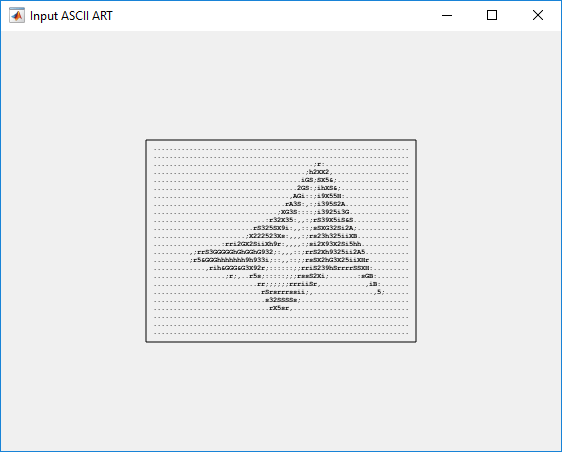AXI4 Master Source
Generate random access memory data
Libraries:
SoC Blockset /
Hardware Logic Testbench
Description
The AXI4 Master Source block generates random access memory data to AXI4-based data interface blocks. You can use this block as a test source block for simulating AXI4-based data applications.
The block accepts a control bus and outputs data along with a control bus.
Examples
Random Access of External Memory
Model external memory accesses from FPGA for rotating an ASCII art image. Many applications require FPGA to access memory in random fashion as per the requirements of algorithm. You will learn how to design memory address generation along with other AXI4 master signals to read and write specific regions of memory using SoC Blockset. You will simulate, implement and verify your design on hardware.
Ports
Input
Control bus from the data consumer signaling that data consumer is ready to accept data, specified as a scalar. This control bus comprises these control signals:
wr_ready— Indicates the block can send data to the data consumerwr_complete— Indicates the write transaction has completed at the data consumerwr_bvalid— Indicates the data consumer has accepted the transaction
Data Types: WriteControlS2MBusObj
Output
Output AXI data to the data consumer. This value is returned as a scalar or vector.
You can change the data type of the output data. For more information, see the Data type parameter.
Data Types: single | double | int8 | int16 | int32 | int64 | uint8 | uint16 | uint32 | uint64 | fixed point
Control bus to the data consumer, returned as a bus. This control bus comprises these control signals:
wr_addr— Specifies the starting address that the block writeswr_len— Specifies the number of data elements in the write transactionwr_valid— Indicates the data sampled at the wrData output port is valid
Data Types: WriteControlM2SBusObj
Parameters
Select the data type format for the output AXI data.
Click the ![]() button to display the Data Type Assistant,
which helps you to set the data type for the wrData output port. For
details, see Specify Data Types Using Data Type Assistant.
button to display the Data Type Assistant,
which helps you to set the data type for the wrData output port. For
details, see Specify Data Types Using Data Type Assistant.
Specify the dimensions of the output data as a positive scalar or an array. This value defines the size of the data signal.
Example: 1 specifies a scalar sample.
Example: [10 1] specifies a vector of ten scalars.
Select this parameter to enable data packing across the last dimension of the
signal. The Memory Channel block packs the data along the last dimension
of the signal. For example, if the channel data type is uint32, the
dimensions are [1024 4], and if you select this parameter, then the
memory channel generates 1024 read or write transactions of 128 bits. For this example,
if you clear this sample packing parameter, the memory channel generates 4096
transactions of 32 bits each.
This figure shows how data is aligned for a signal with data type
fixdt10[4x3]. When the data is packed, three 10-bit words are
concatenated and extended by 2 bits to a 32-bit sample. When the data is not packed,
each 10-bit word is extended to a 16-bit sample.

This figure shows how data is aligned for a signal with data type
uint8[8x3]. When the data is packed, three 8-bit words are
concatenated and extended by 8 bits to a 32-bit sample. When the data is not packed,
each 8-bit word is represented as an 8-bit sample.

The combined width of the flattened signal must not exceed 512 bits.
Specify the number of write requests for the block to send.
Specify the address to which the block writes the data. This value must be a nonnegative integer.
Specify the initial time after which the write operation starts. This value must be a nonnegative scalar.
Specify the generation type for the output as one of these values:
counter— Generate data from a counter, based on the selected data type.random— Generate random data.ones— Generate data with all the bits as ones, based on the selected data type.workspace— Generate data from the MATLAB® workspace.
Specify the value from which the counter starts. The valid range of counter values depends on the selected value for the Data type parameter. If this value is out of the valid range, it is rounded off to the nearest valid value.
For example, if Data type is uint8
and this value is 6.787, this value is rounded to
7.
Dependencies
To enable this parameter, set the Data generation parameter
to counter.
Specify the workspace variable from which output data is generated. This parameter can be any MATLAB-supported variable name.
Note
The workspace variable must be a numerical array.
Dependencies
To enable this parameter, set the Data generation parameter
to workspace.
Specify a time interval in seconds to define how often the block updates.
Specify the Sample time parameter as a scalar when you do not
want the output to have a time offset. To add a time offset to the output, specify the
Sample time parameter as a
1-by-2 vector where the first element is the
sampling period and the second element is the offset. For more information about sample
times in Simulink®, see Specify Sample Time.
Version History
Introduced in R2019a
See Also
MATLAB Command
You clicked a link that corresponds to this MATLAB command:
Run the command by entering it in the MATLAB Command Window. Web browsers do not support MATLAB commands.
选择网站
选择网站以获取翻译的可用内容,以及查看当地活动和优惠。根据您的位置,我们建议您选择:。
您也可以从以下列表中选择网站:
如何获得最佳网站性能
选择中国网站(中文或英文)以获得最佳网站性能。其他 MathWorks 国家/地区网站并未针对您所在位置的访问进行优化。
美洲
- América Latina (Español)
- Canada (English)
- United States (English)
欧洲
- Belgium (English)
- Denmark (English)
- Deutschland (Deutsch)
- España (Español)
- Finland (English)
- France (Français)
- Ireland (English)
- Italia (Italiano)
- Luxembourg (English)
- Netherlands (English)
- Norway (English)
- Österreich (Deutsch)
- Portugal (English)
- Sweden (English)
- Switzerland
- United Kingdom (English)
